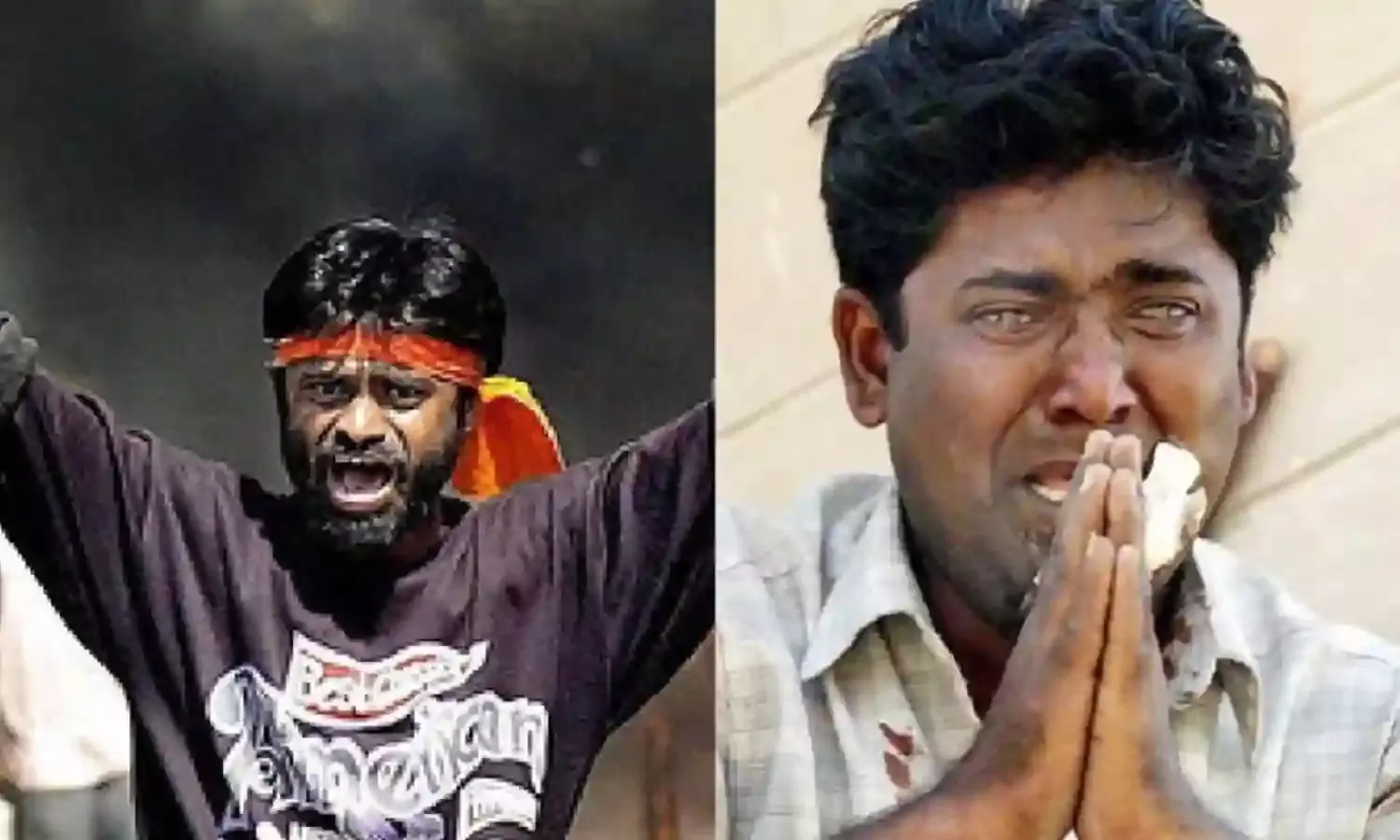The 2 Faces of Gujarat Violence 2002 Campaign for CPI-M’s Jayarajan in Kerala
#TCVotes Qutubuddin Ansari and Ashok Mochi in Kerala
NEW DELHI/KANNUR: On August 25, 1999 he was attacked in his house in Kathiroor village in Kannur by a RSS mob: ‘They were all shouting the slogan “Om Kali Bhadrakali”. I recall the sharp sound of swords cutting through the humid summer air all around me. I realized that I had become drenched in my own blood; the shock of the physical attack must have numbed my pain. I remember making a weak attempt to shield myself with a cane chair. But the attack was so vicious that in one stroke of the blade my right arm was severed past the bone and flesh and left to hang by its skin. I also recall a long unending fall slipping in the pool of my own blood in our drawing room. Though I tried to get up once, I slipped again and fell back. By now my body was completely numb and I could not move’.
Today P.Jayarajan, a well recognised CPI(M) leader in Kerala, is contesting the Lok Sabha elections from Vatakara. And has two of the most prominent faces of the Gujarat 2002 violence campaigning for him: the tailor Qutubuddin Ansari whose photograph pleading with a mob for his life that became viral, and Ashok Mochi whose face came to symbolise the rampaging mobs that attacked the Muslims across the state.
Both have been in touch with Jayarajan and are campaigning for him in his constituency, amidst loud support from the CPI(M) workers. Speaking to The Citizen Jayarajan said that both Ansari and Mochi had been in touch with him for the past few years, and this time they decided to campaign for him jointly. He said the enthusiasm was immense, with the voters listening with avid attention to their plea to support secular forces, to come together regardless of religion, and strengthen the Constitution of India.
Ansari, terrified for his life in the initial years after the horrific violence, fled to West Bengal and started a new life with the help, as Jayarajan said, of the communist party cadres. He refused to give interviews and pleaded with journalists to leave him alone. Seventeen years older, he has returned to his home in Gujarat, and is keen to make a difference on the ground.
Ashok Mochi, on the other hand, realised the folly of his ways, regretted the indoctrination that had led him to the hate and destruction trail, and joined the Dalit Asmita Yatra that began in Ahmedabad in 2016 after the Una incident where Dalits were flogged publicly by a mob. He is a cobbler by profession and his photograph was as iconic as Ansari’s from the chapter of aggressive violence in Gujarat, with fires raging around him, a saffron band around his, an iron rod in one hand as he let out a war cry to kill.
For him Dalit-Muslim unity has become a passion. He says that it was just a coincidence that he became a rioter. But that it was not a coincidence that Muslims and Dalits, both very poor and oppressed, were being targeted in the name of cow protection. He says that everyone has the right to live peacefully, the freedom to eat and wear what we want. He became the “villain’ of the violence, a face splashed across the media at the time.
Ansari and Mochi hugged each other on the dais, clear that for them CPI(M)’s Jayarajan came closest to their ideal of unity and secularlism. The two have been campaigning for secularism and unity, and both have been in touch with Jayarajan for long.
The Vatakara seat is being hotly contested. Jayarajan is a strongman of the CPI-M and fielded from this constituency in a bid to regain it from the Congess party. K.Muraleedharan has been fielded against him by the Congress and the BJP’s candidate is VK Sajeevan. As Jayarajan says, “both are campaigning against me, both saying almost the exact things having come together against me and the CPI(M).”
The constituency goes to the polls on April 23.





